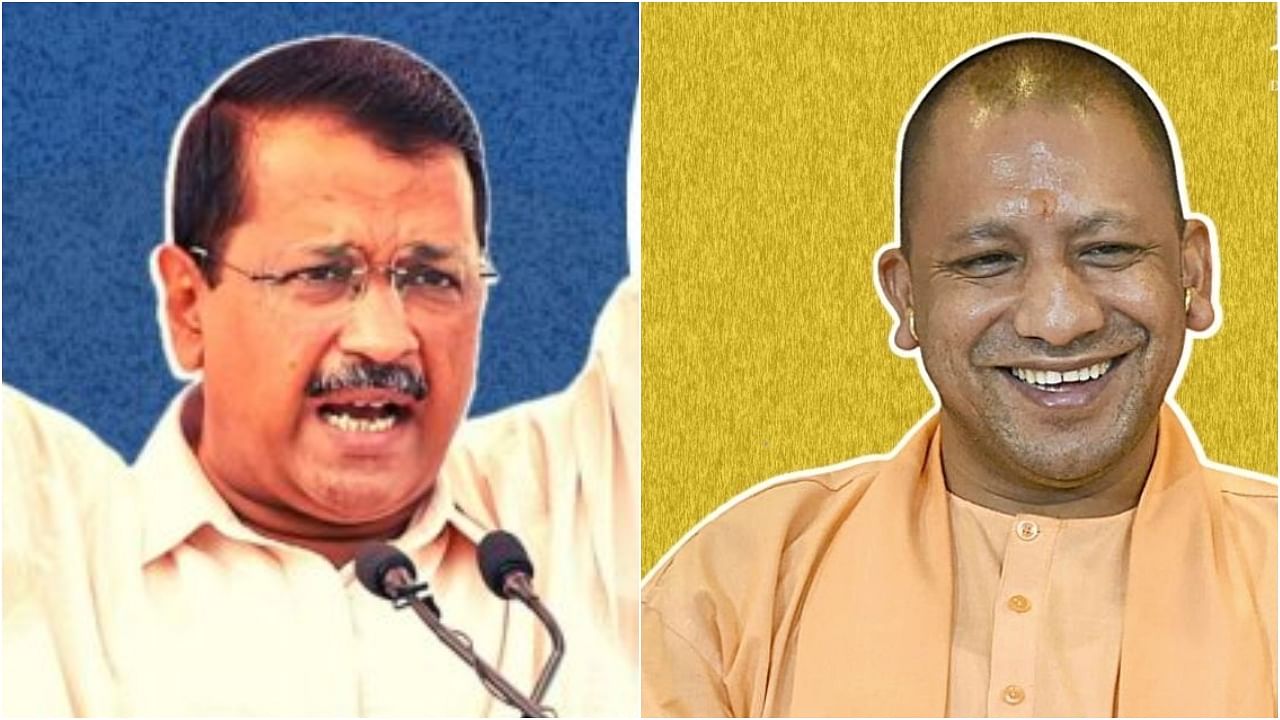
The just-concluded Assembly elections have sent out two clear messages. The first is that the Bharatiya Janata Party (BJP), by winning all the four states that it was in power — Uttar Pradesh, Uttarakhand, Goa and Manipur — has beaten the anti-incumbency trend and reaffirmed that the strong man image of Prime Minister Narendra Modi – whose face has appeared on everything from vaccination certificates to rice bags – has virtually squeezed every other leader from the public space.
Except for – and that is the second message of these elections – the Aam Aadmi Party (AAP) that has won a landslide victory in Punjab, making it the only party apart from the BJP and Congress to be ruling two states. This win will mark the entry of a new player in the country's opposition politics: Delhi Chief Minister Arvind Kejriwal, who also heads the AAP, can now legitimately demand that his name be considered the face of the opposition for the next general elections in 2024.
Also Read — What turned fortunes for the AAP in Punjab?
If the BJP's victories in Goa, Uttarakhand and Manipur are certainly noteworthy, its return to power in Uttar Pradesh is nothing short of historic. Yogi Adityanath becomes only the second chief minister after Govind Ballabh Pant to win a second term in office in the country's largest state. This win also gives legitimacy to his ambition to succeed Narendra Modi as the next leader of the BJP.
So what worked for the BJP in Uttar Pradesh in an election that came in the wake of a debilitating two-year pandemic, widespread unemployment, skyrocketing prices, the stray cattle menace that was destroying standing crops across the state, despite a concerted pushback from an energised Samajwadi Party-Rashtriya Lok Dal-led combine that was drawing large and enthusiastic crowds?
The BJP, of course, has made much of the many welfare schemes that it has launched, particularly the one for free rations, that particularly helped the poorest of the poor. And indeed, it came up in conversations, positively, in every village that I visited during my travels in the run-up to these elections. But was that enough to keep the pain of unemployment and high prices at bay?
In the end, if the Opposition was unable to proffer solutions for the problems the state was facing, it was the BJP's law and order card that worked for it. Every time a voter brought up the issue in a conversation, one knew one was talking to a BJP voter. It was shorthand for the Yogi Adityanath-led administration's crackdown on Muslims, which helped ensure that UP's voters remained polarised along communal lines. It ensured, for instance, that a majority of non-Yadav OBCs – fearful that reservations may go, unhappy that their leaders were not being taken seriously by the BJP that had accommodated them but not given them a role in decision making – plumped for the BJP.
The collapse of the Bahujan Samaj Party (BSP) and the Congress also helped the BJP: the SP-RLD combine increased its vote percentage by over 12 per cent but was unable to win the election because it became a two-horse race.
The Aam Aadmi Party
The landslide victory of the Aam Aadmi Party in Punjab, meanwhile, could well signal a new chapter in Indian politics. The party's success was largely a result of the people's preference for a "non-political" party and their disenchantment with establishment political parties like the Congress and the Shiromani Akali Dal (SAD). The AAP is a non-ideological party whose Delhi model of governance has clearly resonated with the voters of Punjab.
This victory now places Kejriwal on the political centre stage: his party is already speaking of itself as the alternative to the Congress; it sees itself emerging eventually as the real challenge to the BJP. While the AAP is a long way from achieving these ambitions, it is a fact that its success in Delhi earlier and Punjab now has been at the expense of the Congress — something that has led many people who don't take a charitable view of the AAP to describe it as the BJP's B team.
Nevertheless, the party's victory in Punjab — and the fact that it will now be in power in two states — will help its leader to claim a pre-eminent position at the Opposition's high table. If, till now, West Bengal Chief Minister Mamata Bannerjee was playing the lead role in Opposition politics, she will now face a challenge from Kejriwal, who is equally ambitious.
After these elections, the Opposition in the country will have to do some introspection. Of late, Tamil Nadu Chief Minister and Dravida Munnetra Kazhagham (DMK) boss M K Stalin, Telangana Chief Minister and Telangana Rashtra Samithi boss K Chandrashekar Rao apart from Bannerjee and the Nationalist Congress Party chief Sharad Pawar, have been vocal.
For the Congress, the premier Opposition party, it is time for introspection again. Not only has it failed to win any of the three smaller states, Goa, Uttarakhand or Manipur, especially the first two where it stood a good chance, but it was also in free fall in Punjab.
For the young leaders of the SP and RLD, though they have not made the breakthrough in UP they thought they would, they have still performed very creditably – and it is to be hoped that they will continue to build on the gains they have made this time. For they, too, have a big role to play in Opposition politics.
(Smita Gupta is a senior journalist)
Disclaimer: The views expressed above are the author's own. They do not necessarily reflect the views of DH.